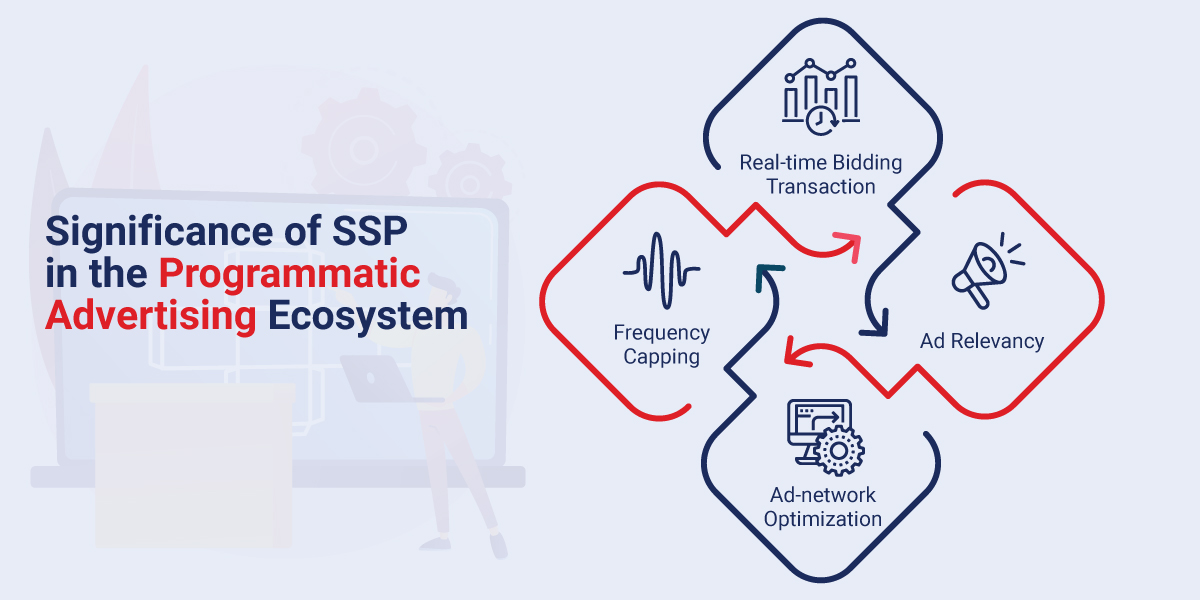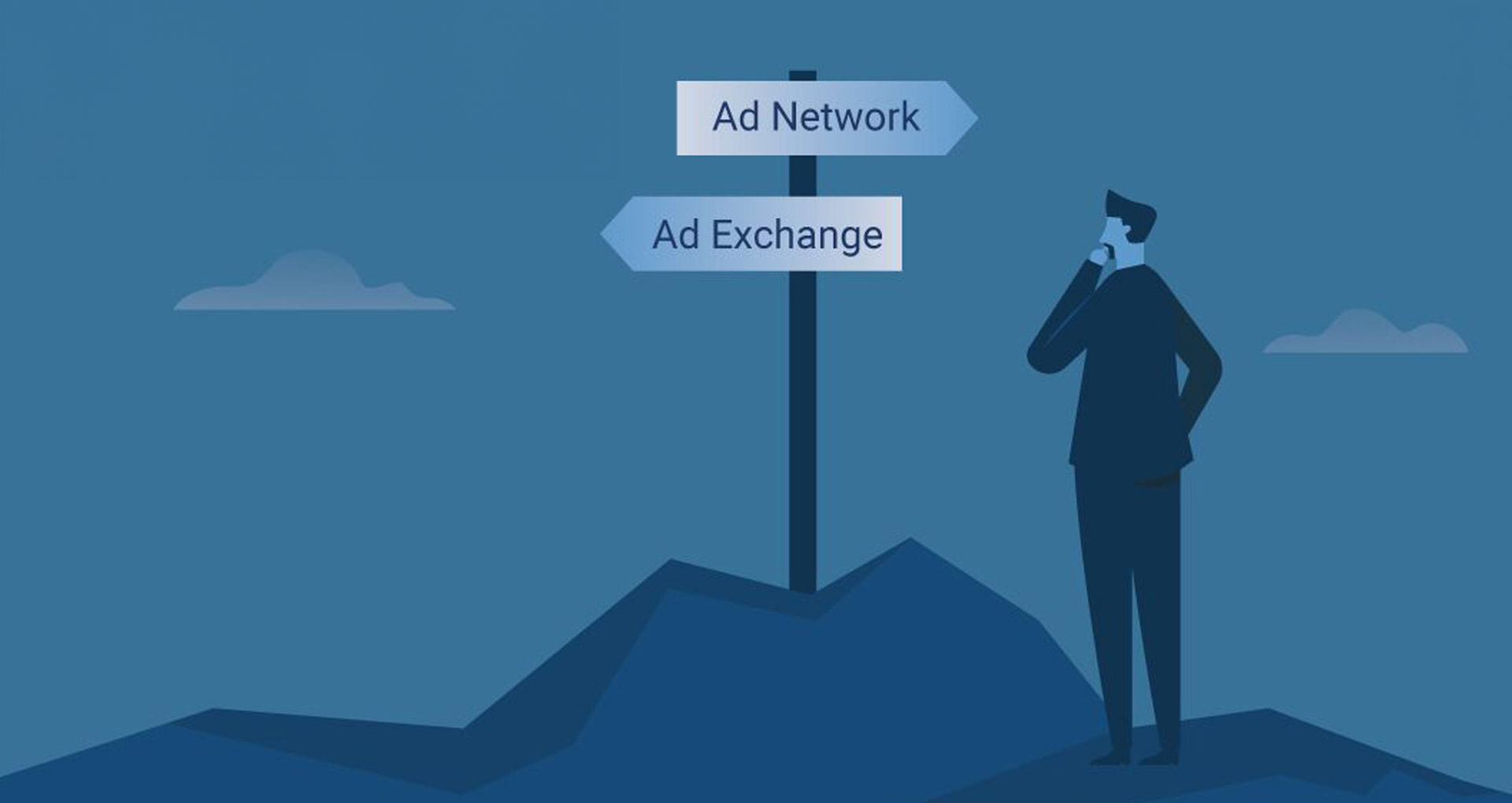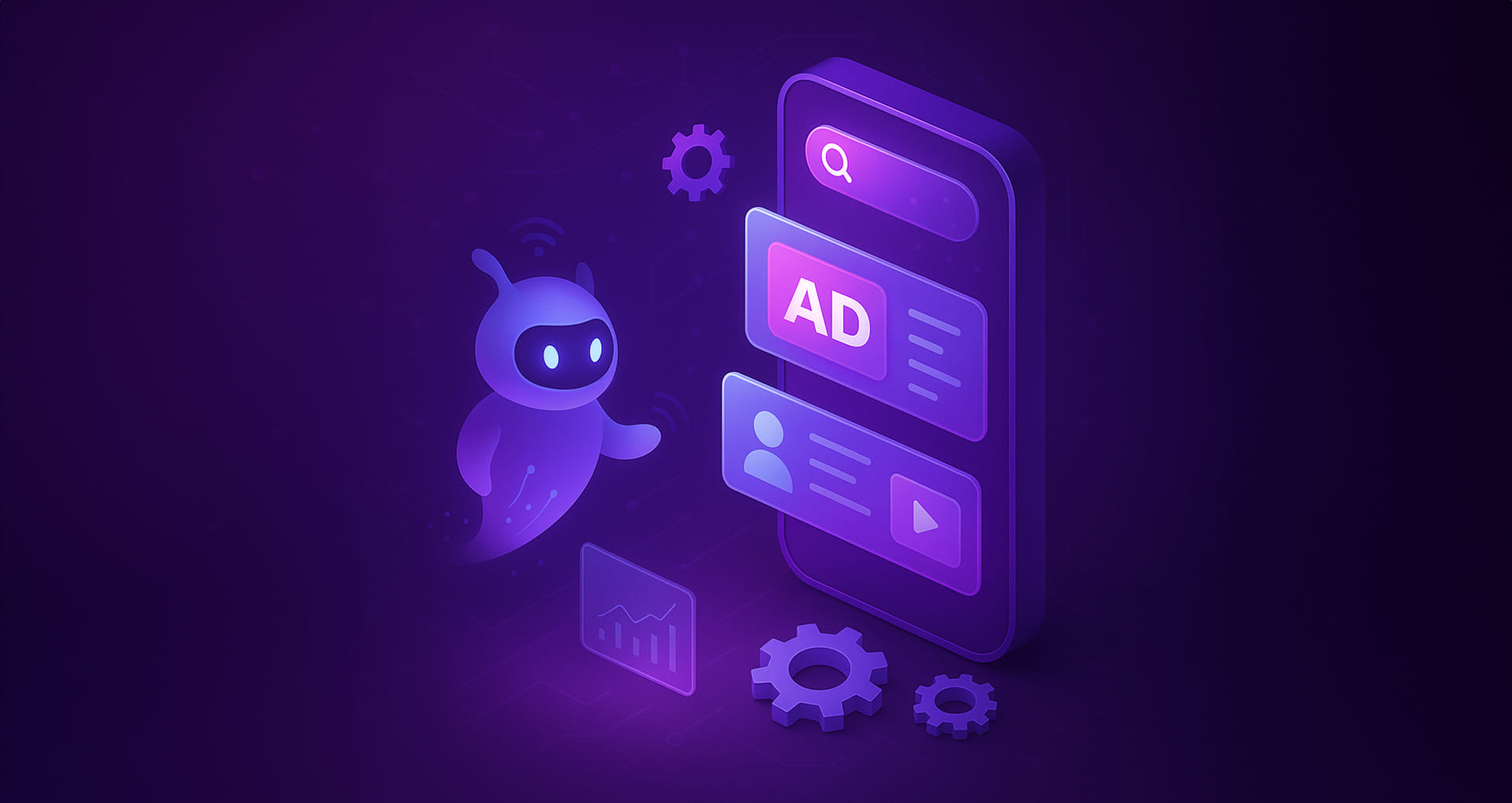Various market and technological factors are driving the rapid evolution of the advertising landscape and fostering substantial growth. Market trends like data-informed strategies, the increasing usage of streaming platforms, rising social media engagement, and prioritizing mobile-first approaches are shaping the new era of programmatic advertising. In this dynamic digital ad landscape, supply-side platform advertising has emerged as a promising solution to redefine how promotional space is sold. It empowers publishers to optimize inventory management through automation and data-driven insights, enabling a more efficient, transparent, and rewarding advertising experience.
The AdTech industry is rapidly leveraging SSP advertising capabilities to streamline and optimize the sale of digital ad inventory for a sustainable advertising ecosystem. According to reports, the supply-side platform (SSP) market is expected to reach approximately USD 117.32 billion by 2033 at a CAGR of 13.36%.
In this blog, we will explore what a supply-side platform is, how it works, its key role in streamlining the programmatic AdTech ecosystem, and the benefits it offers to publishers.
What is SSP Advertising?
A supply-side platform, also known as a sell-side platform, is an advertising technology that publishers use to automate the management, selling, and optimization of digital ad inventory across websites and mobile apps.
The key capability of SSP advertising is automation, which fosters efficient and faster sales of ad inventory based on impressions. It allows publishers to achieve sustainable growth in their advertising revenue and connect with multiple ad networks and demand-side platforms to grab ad display opportunities.
Unlike the traditional way of selling ad inventory, supply-side platforms have transformed the process into a more data-driven, streamlined, and optimized usage of resources by facilitating real-time bidding to choose the most profitable ad creatives for the respective digital space.
What is the Difference Between SSP and DSP?
- The supply-side platform (SSP) operates from the publishers’ end and facilitates selling ad inventory to demand partners. On the other hand, a demand-side platform (DSP) performs activities on behalf of advertisers and buys ad inventory from publishers and ad exchanges.
- In consideration of users, SSPs typically count as revenue sources for publishers like website owners, app developers, or media companies, and many more entities with digital assets. Whereas DSPs are used by advertisers, media buyers, marketing agencies, or businesses that want to generate leads and build brand awareness through paid ads.
- SSPs depend on data such as audience demographics, content type, and engagement metrics to help publishers optimize their inventory pricing and improve ad placements. DSPs, on the other hand, use data related to user behavior, location, and interests to help advertisers target the right audience and optimize future ad campaigns.
- SSPs act as a medium for publishers to unlock new paths of revenue, while DSPs serve as a core medium for businesses and ad agencies to maximize ad performance, generate leads, and achieve impactful ROI.
How Does Supply-Side Platform Work?
The rapid incorporation of technological solutions in the advertising environment has replaced manual and inefficient ad placement with an SSP-powered automation approach. This transformation aims to promote the streamlined flow of programmatic advertising through the SSP platform from one endpoint to another, i.e., from publishers to advertisers, and to unlock the effective means of reaching a specific targeted audience. Let’s understand how the supply-side platform works.
- SSP advertising platform integrated with publishers’ respective digital webpages, apps, or other platforms makes ad space inventory available whenever end users load the digital platform.
- To fill the space with the most suitable advertisement, the publisher can efficiently manage inventory by setting pre-defined parameters like the type of ads (image, video), minimum ad space rate, size, and location, targeting option, etc.
- A supply-side platform (SSP) facilitates connections with demand-side platforms through ad exchange—the marketplace—or directly with specific DSPs using a pre-dealing approach.
- RTB (Real-time Bidding) interface conducts an automated auction process among interested advertisers or buyers, and a promotional slot is allocated to the highest bidder.
- Then, the sell-side platform (SSP) indicates the ad server to deliver the winning ad creative (piece of content) to the publisher’s digital platform.
- Supply-side platform advertising allows users to manage and derive insightful data on ongoing ad campaigns from a single interface throughout the process of making ad inventory available, connecting with DSPs, conducting RTB, and publishing ads.
The Role of SSP Advertising in the Programmatic AdTech Ecosystem
The programmatic AdTech ecosystem is built on the foundation of advanced and dynamic platforms that automate and ensure connectivity between the ad transaction phases. SSP advertising platform plays a pivotal role in this ecosystem by empowering publishers to monetize ad space and generate revenue streams through efficient ad inventory management and optimal ad placement.
In this section, we will explore supply-side platform incorporation in the technology infrastructure of programmatic ads, leveling up the entire flow:

Real-time Bidding Transaction
The RTB interface in SSPs allows publishers to sell ad space to the highest bidder DSP through an ad exchange marketplace. It conducts auctions to sell the space and selects the most revenue-driven DSP as a winner in milliseconds.
Frequency Capping
Frequency capping is a standard practice in the realm of the programmatic AdTech ecosystem that refers to maintaining the limit of displaying the same ad to the same user within a particular timeframe. While implementing SSP in an online advertising environment, it is highly recommended to consider frequency capping (also known as impression capping).
Based on historical data, the collaboration between the sell-side platform and demand-side platform (DSP) is responsible for determining the frequency cap and restricting advertisers with a maximum ad display limit.
Ad-network Optimization
In the retail AdTech space, SSP, as an advertising platform, interacts with multiple ad networks that contain a bunch of DSPs willing to feature ads on the publisher’s digital platform. From the array of options, the process of selecting the most beneficent ad network is driven by data analytics that evaluates the respective ad networks’ historical performance metrics. Let’s understand this scenario: Imagine there are three ad networks—AdA, AdB, and AdC.
When it’s time to submit bids, the ad networks bid as follows:
- AdA bids $1.70, the highest bid.
- AdB bids $1.50, for the ad impression.
- AdC bids $0.90, the lowest bid.
However, the SSP’s decision doesn’t solely rely on the bid price. It also considers other crucial metrics like the ad network’s previous performance, including its highest fill rates and viewability scores for the same ad format. So, it can select AdB as the winning ad network instead of AdA, even though it has the highest bidding amount.
Ad Relevancy
Displaying relevant advertisements on a publisher’s digital platform increases user engagement, improves overall campaign performance, boosts relevancy scores, and reduces ad blocking. To strengthen the relevancy factor, supply-side platform advertising plays a key role through targeted data analysis and real-time bidding to match the website content with targeting criteria from the DSP.
Benefits of Supply-Side Platform for Publishers
SSP advertising, a publisher-oriented solution, is revolutionizing ad inventory selling & monetizing strategy. From enabling publishers to generate digital revenue streams to tap into the global advertising marketplace, SSPs have unlocked cohesive benefits for publishers. In this section, we will explore key benefits publishers can leverage by incorporating the SSP platform in the ad impression selling system.
Automate Ad Space Supply
Traditional media selling is a manual, inefficient, and resource-consuming process. It often involves meeting advertisers in person and navigating complex operational structures that don’t support future competitiveness.
Meanwhile, supply-side platform advertising enables digital-first publishers to leverage automation to efficiently accomplish ad space transactions. It makes automated connections with ad networks, ad exchanges, and demand-side platforms that are driven by data analytics capability. This entire systematic cycle demands less human interaction. It reduces redundant and complex ad phases, lowers labor intensity, and minimizes chances of error. According to the collected data, integrating automation in advertising can save businesses $130,000 a year in costs.
Revenue Maximization
Implementing supply-side platforms (SSPs), opens up earning opportunities for publishers by offering a significant advantage over traditional methods. Supply-side platform advertising establishes connections with numerous ad exchanges, DSPs, and demand partners worldwide to grab revenue generation opportunities worldwide and have a funnel of promotional space. Moreover, data-driven strategies empower publishers to sustain financial growth in the evolving online ad landscape.
Data-driven Insight and Reporting
The intersection of SSP advertising with the latest technologies and data sources provides growth-oriented insights to publishers. For example, SSPs provide crucial information on audience behavior and ad performance by aggregating data from website analytics, cookies, user profiles, and ad exchanges. Utilizing advanced algorithms and machine learning, SSP platforms analyze data and generate segments of targeted audiences, track ad campaign performance, and employ predictive models for future optimization.
The entire process generates insights displayed on SSP dashboards as visual representations. With an accurate analysis of data, publishers can make informed, data-driven decisions, optimize ad placements, understand their audience, and maximize revenue potential effectively.
Better Control Over Ad Inventory
Beyond basic ad inventory management, SSP unfolds opportunities for publishers to enjoy a higher level of authority over their ads. It brings innovation with future possibilities, like granular targeting instead of basic demographics-based audience segmentation. This AI-based hyper-targeting increases ad value by being even more specific about the audience.
With the frequency capping concept, SSP enables publishers to maintain the positive ad experience of users by preventing fatigue through limiting ad targeting range. Supply-side platforms give publishers the ability to choose DSP creatives based on multiple parameters, impression pricing, format, etc. Real-time monitoring and tracking capabilities allow adjustments to ad campaigns to enhance performance rate.
Improved Fill Rates
An SSP helps publishers fill more of their available ad space by connecting them to a wider set of buyers. More interested buyers mean more chances for each impression to get picked up at a fair price. The platform also studies past performance to adjust prices wisely so that publishers do not lose opportunities by setting them too high or too low. This leads to fewer empty ad slots and steadier revenue.
Transparency and Brand Safety
With an SSP, publishers get a clear view of who is buying their ad space and what type of ads will appear. They can review detailed activity, check the quality of ads, and block anything that feels unsafe or unsuitable for their audience. The system also scans ads to keep out harmful or misleading content. This helps publishers protect their brand and maintain a safe experience for users.
Support for Multiple Formats and Private Deals
An SSP allows publishers to build earning setup from different types of ads such as display, video, native, mobile, and connected TV through one platform. This makes it easier to use every available space effectively. It also supports private deals with selected advertisers, helping publishers build stronger partnerships and secure better returns. These direct arrangements often bring more stable and predictable income.
What are the Main Components of a Supply-Side Platform (SSP)?
SSP advertising platform leverages advanced technology stacks to manage, optimize, and monetize ad inventory. It interconnects components to make data-driven decisions and optimize ad placement. Let’s understand the main components of the selling-side platform (SSP).
Backend and Infrastructure: This component is the heart of the supply-side platform. It is responsible for executing end-to-end media selling activities, including handling bid requests, conducting auctions, and serving ads. Scalability in infrastructure further avoids latency and high availability.
User interface: It’s the front view of the SSP platform that interacts with the publisher or someone responsible for operating it. Its easy-to-use navigation and seamless flow enable end-users to operate it without proficiency in technical skills.
Integration: This capability of the supply-side platform allows publishers to flawlessly integrate multiple data sources, such as demand-side partners, ad exchanges, and servers. It also supports industry-standard protocols and API to communicate efficiently and perform data exchange processes.
Inventory Management: An SSP platform allows publishers to package their ad inventories based on a wide range of criteria, such as ad format, targeted audience segments, and creatives. This component benefits publishers to ensure accurate ad delivery, yield optimization, and future inventory forecasting.
Ad Exchange: It is a centralized marketplace that opens the door for advertisers and publishers to connect with each other through SSP and DSP and streamline the buying and selling of ad impressions.
Header Bidding: To generate higher revenue, it offers available ad inventories to multiple DSPs and ad exchanges before sending a signal to the server for the ad’s publication. This process increases competition and ensures a fair auction.
Analytics Report: This component leverages data analytics and machine learning models. It provides comprehensive insights on ad performance, revenue breakdown, ad exchange performance, and buyer preferences and behaviors.
Partner with Rishabh Software to Develop a Custom Supply-Side Platform
At Rishabh Software, we specialize in developing performance-driven supply-side platforms from scratch, backed by our robust experience as a custom AdTech development services company. We offer end-to-end custom media selling platform development services, including system architecture, inventory management tools, and a real-time bidding platform. Our seasoned AdTech team excels in ad tech engineering and deploying omnichannel sell-side platforms (SSP) to automate ad space selling, drive your monetization, and optimize yield.
The Supply Side Platforms (SSPs) developed by Rishabh Software can integrate with advanced data-based services, such as data analytics, data visualization, and machine learning. This integration empowers publishers to enhance user engagement across key channels and formats, such as programmatic CTV advertising, online video, mobile apps, and the web.
Frequently Asked Questions
Q: What are the examples of a Supply Side Platform?
A: Here is the list of some popular supply-side platforms:
- Google Ad Manager
- Magnite
- PubMatic
- OpenX
- Index Exchange.
Q: How do supply-side platforms make money?
A: One of the most common ways SSPs make money is by charging a percentage fee on ad revenue from publishers’ inventory. Also, SSP advertising offers premium services and may charge separate fees to enhance revenue optimization.











 30 Min
30 Min


